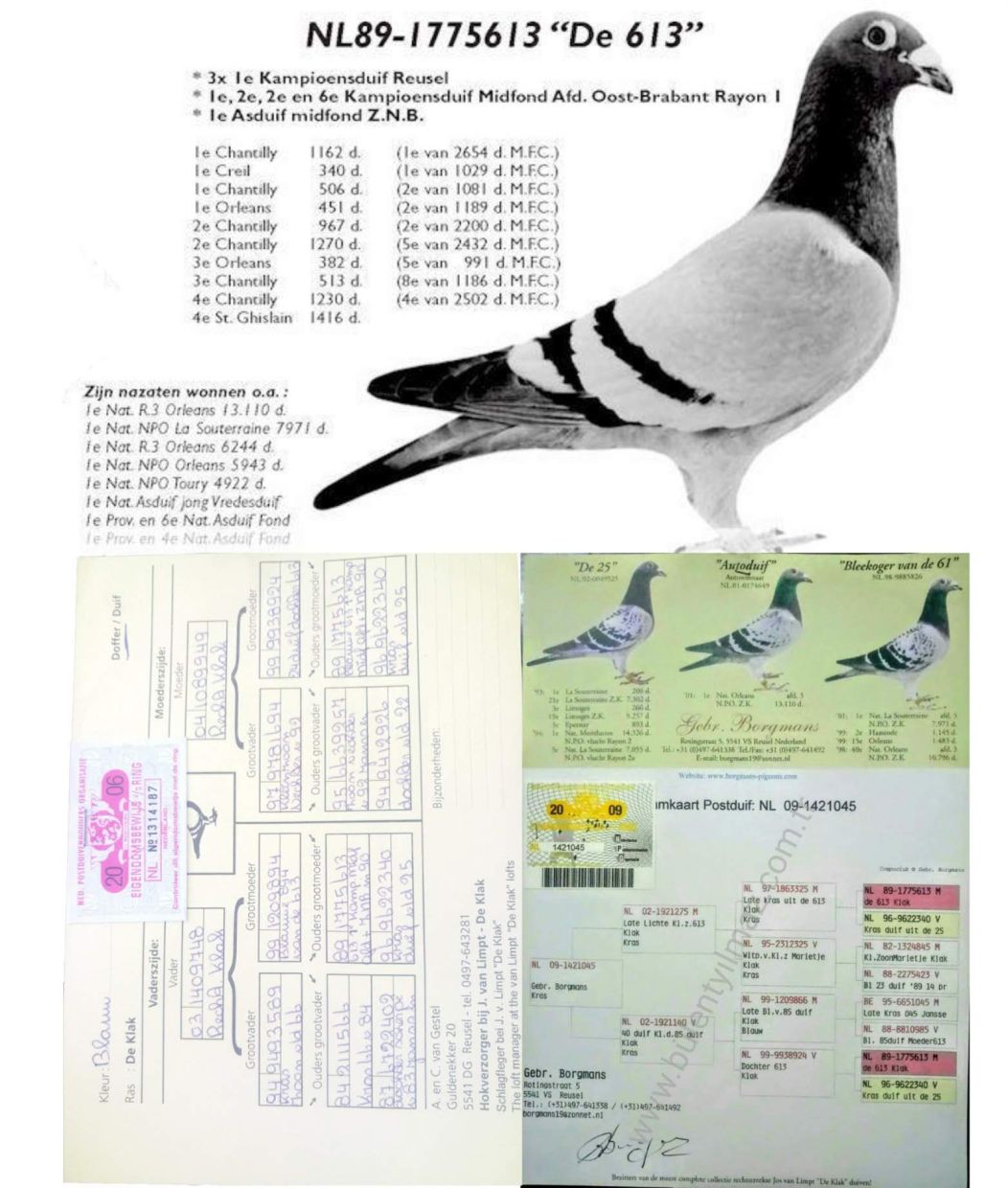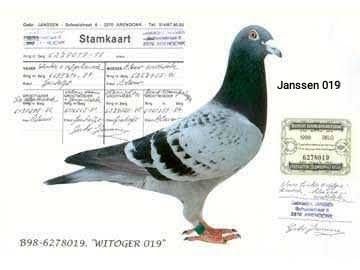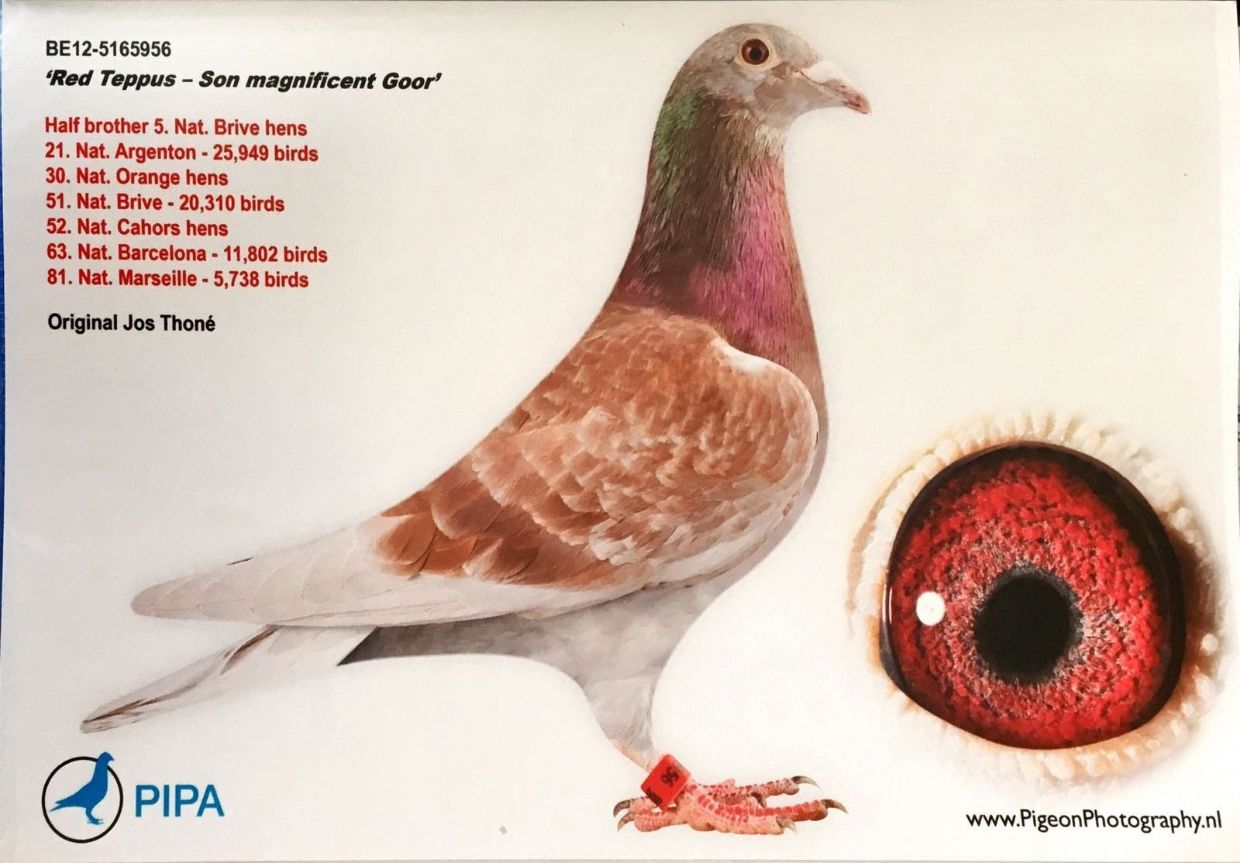


.jpg)

.jpg)
.jpg)

How Do Pigeons Find Their Way Home?

How Do Pigeons Find Their Way Home?
Overview
I'm not a scientist or researcher. I'm just a moderately intelligent guy who has been around pigeons my whole lift. The one question, anyone who encounters a fancier asks though is, "How do they find their way home?" This is my attempt to cover that subject. There are a lot of great people that have tried and are currently trying to answer that question. It's incredible that to this date, there is no one that has completely figured out how our birds find their way home. As a fancier and honestly, he can't tell you for sure. Most of us instead talk about the abilities of the birds that we do know of and say they must use a combination of those abilities. This section attempts to cover the subject.
Pigeon Abilities
So what do we know about our amazing pigeons? They can sense the magnetic poles of the Earth as well as magnetic fields. They use the sun as a compass based on it's position in the sky and the time of day. Pigeons can see polarized light. Pigeons can hear ultra low sound frequencies. Pigeons have such keen eyesight it is proposed they can see the stars during the day. Pigeons have a sense of smell that might even rival that of canines. A pigeon can fly 500-600+ miles in a day without rest covering well over 12 hours of flight.
Theories
1. Pigeons use the sun and magnetic fields to find their way home.
2. Pigeons use land marks to find their way home
3. Pigeons use roads to find their way home (laughing -- very seriously laughing)
4. Pigeons build a memory map to find their way home
5. Pigeons use a combination of their abilities to find their way home (Most likely)
Research
Go onto the web, the library and any where else and eventually you will find research at various universities on the subject going back for years. Here are some examples that I have heard.
1. Magnets place on pigeons to interfere with their ability to sense magnetic fields
2. Contacts in their eyes to restrict their ability to see (very cruel research)
3. Wax in their ears to interfere with their ability to hear (yes, pigeons have ears)
4. Time shifting pigeons and comparing to a control group
5. Finding two geographical areas that have the same magnetic field pattern and training from a home loft at location A and eventually releasing them at point B (find this one, it is very interesting)
6. Placing a GPS device on the pigeons and releasing them.
7. Placing the pigeons in sensory deprivation containers during transport
What's the common theme here? Attempt to throw a wrench in the works and get the engine to shut down.
Military Observations
The U.S. Navy had lofts on ships. The birds were able to home from one ship to another even at night. Mind you, at night with the right moon light and reflectivity from the water it's probably feasible. One conclusion was that each ship's engine had a distinct sound and the birds used the sound of the engine from their ship to find the correct ship.
Birds that were taken to a series of training points in a zig zag pattern when released at further points would fly over each of their previous release points even though they were not the direct route home. Soldiers were placed at each point when this observation was made.
The U.S. Army had mobile lofts. They were able to relocate the lofts and retain the birds by moving the lofts a few miles each day and letting the pigeons out to fly daily. When the loft was in the process of constantly moving the birds would not fly out of range of the loft. When the loft had become fixed for a period of time (I don't remember how long it took) the birds would eventually route further away and still home to their loft.
Problems with experiments
1. Introducing foreign devices: In examples like the magnets and the GPS devices, they are often heavy in respect to a 12 oz pigeon. This has an affect on the bird. Do an experiment to see how a world class runner can run 100 yards at near record pace but add 8-12% the equivalent of their body weight in equipment to them and try to duplicate their feat. Yeah right!
2. Inability to determine what happens between point A and B. Some very good experiments are skewed or inconclusive because what happens to the birds between point A and B can not be observed. The only thing that can be observed is the end performance between the experiment group and the control group.
3. Perspective: Fanciers are used to releasing their birds in various weather. We observe them loft fly in light rain, fog, hot sun, high humidity, snow, freezing temperatures, different times of day. We have raced our birds with tail winds, head wings, cross winds, thunder storms, tornadoes, with fronts moving through the area, changing winds, high humidity, low humidity, full sun, spring and fall. We are fanciers and we are practitioners of pigeon lore. We have a ground matter knowledge. Scientist and researchers have a scientific model, scientific method and the ability to collect and analyze data and hypothesize. It would be far superior research if the two were more entwined but often they are not.
4. Scale: Some experiments such as the GPS experiment released the birds at such short distances that in my opinion it does not qualify as homing. Release a bird within 20 miles of their loft and they are most likely in territory that have routinely exercised in before. My theory is they will not be using the same cues that they would when they find themselves at an unknown location hundreds of miles from home. Granted the scientific method is necessary and scale is often used to produce measurable results. Scale though skews and experiment when what should be researched is the great distance at which a bird uses homing ability.
What interferes with homing ability?
Now we are back to theories in our quest to answer this question. There are experiments in which various things have been used to restrict their natural abilities and their ability to orientate. But when someone asks that question it is usually a fancier trying o understand why there have been smash races on days with good weather. Why we have bad training tosses on what appeared to be a good day. There seems to be a consensus amongst homing pigeon fanciers that losses in young bird training and races both old and young birds are increasing. Theories and suggestions abound regarding why this is so. Here are some examples.
1. Sonic Booms from aircraft
2. Cell phone towers
3. A slow but steady decrease in the Earths magnetic field
4. A greater amount of ultraviolet light from the sun reaching the Earth due to changes in our atmosphere
5. The use of ultra low frequency communication between naval ships and submarines using sound waves traveling through the Earths mantle
6. Microwaves
7. Pollution
8. Erratic weather
These are just some of many ideas. Surely there are some great research ideas in this list and maybe someone brilliant will explore them some day.
Conclusion
Bottom line is no one knows for sure what has been affecting our birds ability to navigate. We just know there have been more and more hard races and greater losses. We may not discover what the problem or combinations of problems are. I do know one thing. We have one wonderful tool at our disposal. Natural selection. The training basket, the racing crate and our own criteria are used to select pigeons that despite all these obstacles will find home. Through selective breeding as we already practice, we will breed through and around any obstacles. It doesn't matter if they ever find the answer. We keep training, racing and breeding in these ever evolving conditions and our birds will evolve around them as well.